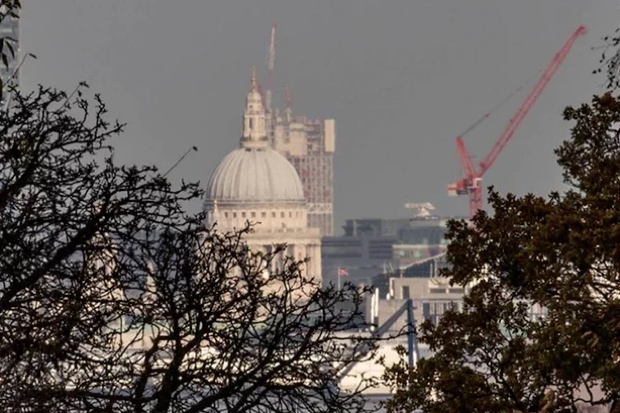Richmond Park has been in the news a bit lately. It is portrayed as a bastion of wealth and privilege, whose residents stand accused of trying to lord it over ordinary voters. But never mind blocking Brexit, do the people who live there deserve the right to an uninterrupted view of St Paul’s? Outrage has greeted the construction of a 42-storey tower in Stratford, East London, which is accused of compromising the view of Wren’s great cathedral from a mound in Richmond Park.
Planning permission for Manhattan Loft Gardens, which will incorporate 250 flats as well as a 145-bed hotel, was granted back in 2011. Yet no-one seemed to notice at the time that the block would stand directly behind St Paul’s when viewed from Richmond Park. The cathedral says it was not consulted. Opponents point to something called the London View Management Framework, which is supposed to guard against intrusions into the views of London’s best-known buildings. But it appears that the policy only applies to buildings close to St Paul’s – Manhattan Loft Gardens being too far away to count.
Sadiq Khan has now ordered an inquiry into how the block was granted planning permission. There are two things he might consider. Firstly, if views of St Paul’s are going to be protected, surely it is the close-up views which matter most. In contrast to many of our great cathedrals at Canterbury, York and Durham, St Paul’s is already remarkably hidden from the streets which surround it. By contrast, you pretty well need a telescope as it is to see St Paul’s from Richmond Park.
But more to the point, Sadiq Khan might ask why it is only now, when views of St Paul’s are threatened, that anyone seems to have raised objections to Manhattan Loft Gardens. A more pointed objection is surely that it is being built shamelessly as yet more fodder for international investors. The smallest, one-bedroom flat in the development is for sale through the not-very-local estate agent Harrods Estates for £750,000. It is neither the sort of property, nor at a price, which is going to help give ordinary Londoners a home. More likely, the vast majority of these flats will be sold to overseas investors, many of whom will not even let them out but keep them simply as stores of wealth in what they see as a stable democracy.
If this kind of development has reached Stratford, there is little hope for the rest of London – the entire city is now considered by developers as fair game for luxury development. And yet in spite of the occasional noises from government ministers and London mayors, blocks like these are still being given planning permission.
I can’t help thinking that in most of the world’s cities, the monopolisation of the housing stock by investors would be taken more seriously than the view of a cathedral from a distant hill.







Comments